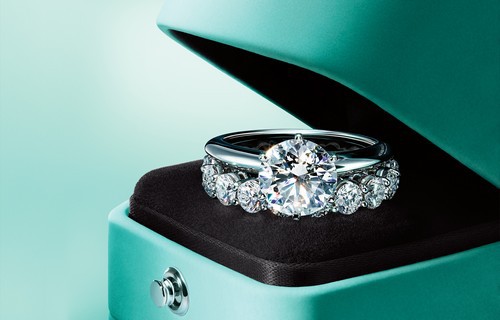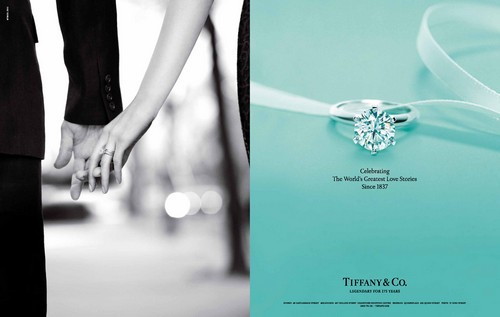The Marketing mix of Tiffany & Company analyses the 4Ps of Tiffany & Company, including the Product, Price, Place, and Promotions. Tiffany & Company is a public limited company of American origins. The world-recognized Company is associated with the Lifestyle and retail sector as it deals in jewelry and diamonds. It was founded in 1837 by its co-founders, John B Young and Charles Lewis Tiffany. The Company was initially established as Tiffany, Young, and Ellis, but it later changed its name to Tiffany & Company, and now it is referred to as Tiffany. It faces competition from the following.
- Chopard
- Bulgari
- Harry Winston
- Blue Nile
- Gitanjali
- Graff
- De Beers
- Chanel
- Cartier
About Tiffany & Company
- Type: 1837
- Industry: Financial services
- Founded: 2000
- Founder: Charles Lewis Tiffany
- Headquarters: New York City, NY
- Area served: Over 20 countries
- Key people: Anthony Ledru (CEO) and Alexandre Arnault (President)
- Number of employees: Over 13,000
Table of Contents
Tiffany & Company Product Strategy
Tiffany & Company specializes in specialty and luxury items. Its name is synonymous with exquisite designs and flawless craftsmanship. Its full product line and range are diversified and unique, including personal accessories, customized items, and handcrafted products.
The new Product Mix of Tiffany & Company in 2023 is as follows (Source).
- Diamond and Gemstone Jewelry: Exquisite rings, necklaces, earrings, and bracelets featuring diamonds and gemstones.
- Sterling Silver Jewelry: A range of jewelry items crafted in sterling silver, a signature metal for the brand.
- Gold Jewelry: Offers various jewelry pieces made from yellow, white, and rose gold.
- Watches: Luxury timepieces for both men and women, combining elegance with functionality.
- Home & Accessories: Includes sterling silverware, crystalware, leather goods, and other luxury home items.
- Fragrances: A line of sophisticated fragrances for men and women, complementing their luxury goods range.
Tiffany & Company Place Strategy
Tiffany & Company has an international presence and operates via its headquarters base in New York City in the United States. The Company started its operations in Brooklyn and expanded to overseas markets, including Canada, Mexico, Brazil, the United Kingdom, Italy, Ireland, France, Spain, India, Belgium, Austria, Netherlands, and Australia. In 2004, Tiffany & Company opened a chain of outlets for the luxury market with only pearl jewelry.
Tiffany & Company has a strong distribution network, including direct and indirect distribution. The products are sold via corporate merchandising and direct mail. The Company has Tiffany stores that help in its distribution strategy for the easy and convenient selling of its products.
The Tiffany stores are located in places that suit the whims of the wealthy and elite. The window display, floorings, and interiors are to be seen to believe because of their magnificence. Its flagship store is located in Manhattan in New York City. Several of its outlets are located at airports and high-end shopping malls to gain maximum customers, brand loyalty, and awareness.
It has well-developed manufacturing facilities responsible for 60% of its products. The rest are derived from overseas third parties. In the United States, silver goods and jewelry are manufactured in Mount Vernon, Cumberland, and Lexington, and the hollow silverware is manufactured in Rhode Island. The brand has other facilities to polish and cut the diamonds.
Exclusive and prestigious locations mark Tiffany & Co.’s place strategy:
- Global Retail Stores: Maintains flagship stores in major cities worldwide, symbolizing luxury and exclusivity.
- Online Sales Platform: Offers an extensive online shopping experience to cater to the digital consumer market.
- Selective Distribution: Chooses retail locations strategically, often in upscale neighborhoods and luxury shopping districts.
- Airport Boutiques: Operates boutiques in select international airports, targeting affluent travelers.
- Collaborations and Pop-Ups: Engages in strategic collaborations and pop-up stores for exclusive collections, enhancing brand visibility and reach.
Tiffany & Company Pricing Strategy
At the end of the third quarter of the fiscal year 2016-17, Tiffany & Company posted its revenues and net income at 4.00 billion US Dollars and 446.1 million US Dollars, respectively. The Company has positioned itself as an arbiter of style and taste in the jewelry industry, and its products are associated with elite status.
It has targeted its target market of upper-class people from affluent families who look for exclusivity, sophistication, elegance, and style. The brand is all this and more as it caters to high-end products and its gift wrapping, which is unique and appreciated by all.
Tiffany & Company offers premium products and has adopted a premium pricing policy. As it caters to people who do not have to think before purchasing, its sales and revenues are assured. To have a competitive advantage and compete with rival brands, Tiffany & Company has launched some reasonably priced products and adopted an affordable pricing policy. These products increase its sales volumes and help it to earn further revenues.
Tiffany & Co.’s pricing and marketing strategy reflects its status as a luxury brand:
- Premium Pricing: Aligns with its high-end brand image, offering exclusive and finely crafted jewelry and luxury goods.
- Value-Based Positioning: Prices are based on the perceived value, quality, craftsmanship, and brand prestige.
- Tiered Pricing for Broader Appeal: Offers a range of products at different price points to appeal to a broader audience while maintaining exclusivity.
- Limited Editions and Collaborations: Prices may be higher for limited edition collections and exclusive designer collaborations.
- Dynamic Pricing for Rarity: Rare and unique pieces, particularly those with significant gemstones or unique designs, command higher prices.
Tiffany & Company Promotion Strategy
Tiffany & Company has a solid, aggressive marketing policy to create positive brand awareness. It has created magnificent ad campaigns and shown them via newspapers and magazines like Texas Monthly, Black Enterprise, Conde Nast Traveler, Money, The New York Times Magazine, and Vanity Fair. With the advent of digital marketing and social media platforms, the Company displays banner advertisements in the New York Times.
The app can be downloaded free of any charge. Tiffany & Company uses social media marketing platforms to connect directly with its customers. It has its official website to enable access to any relevant information. The Company has a fan following of 10.0 million and 1.6 million on its Facebook page and Twitter account, respectively.
Tiffany & Company has used its catalog as part of its advertising strategy and policy. The catalog was free until 1972, but later, a fee was levied. The Company offers a corporate gift catalog annually, and several corporations buy its gift items for achievement recognition awards. Tiffany’s flagship store in Manhattan in New York City has been the favored location of several movies like Sweet Home Alabama and Breakfast at Tiffany, starring Reese Witherspoon and Audrey Hepburn, respectively.
Tiffany & Company has been responsible for making several trophies, including the Vince Lombardi Trophy at the Super Bowl for the winning NFL Team, the Larry O’Brien Trophy for the winning team of the NBA Finals, the MLS Championship Trophy, the Detroit Gold Cup, and Rugby League World Cup Trophy, For San Francisco Giants the Company has created 2010 and 2012 World Series Rings.
Some Recent Video ads and Print ads for Tiffany & Company are:
Liked this post? Check out the complete series on Marketing Mix

